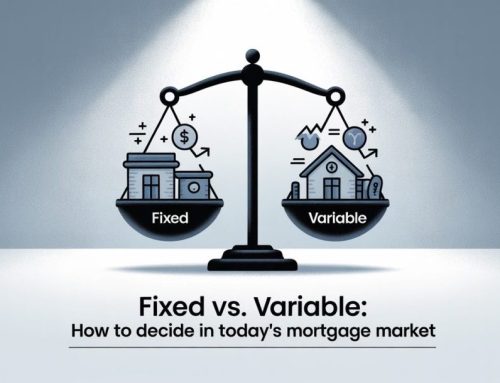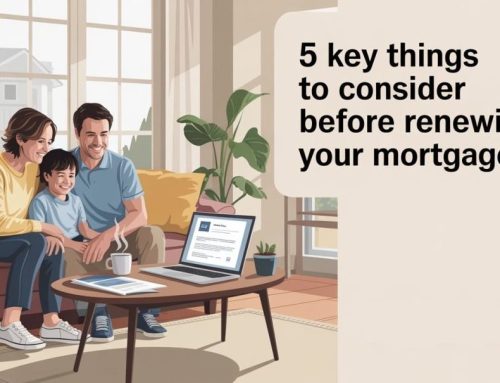Whether you’re a first-time home buyer or a home buying veteran, mortgage terminology can be confusing and it’s not uncommon for terms to be misused. It can be difficult enough going through the different options to determine the best mortgage for you. Let alone, trying to get the mortgage terms straight as well.
One of the most common misused terms is ‘conventional mortgage’, which is often used to refer to a mortgage that will not be registered as a collateral charge. But this is not correct, and this misuse of the term can lead to receiving inaccurate information from a mortgage specialist. A mortgage can be both conventional and collateral at the same time, which I explain in detail in my blog on Everything You Need To Know About Collateral Mortgages
If a conventional mortgage can also be registered as a collateral charge, then what does it mean to have a conventional mortgage?
What Is a Conventional Mortgage?
A conventional mortgage applies when you have a down payment of 20% or greater. All it means that there is no CMHC mortgage default insurance required, and nothing more.
As mortgage insurers are not required for conventional mortgages, lenders are not limited to their guidelines. This can open up additional possibilities such as higher qualified amounts, and alternative mortgage options.
This doesn’t mean that the insurers are never involved when the mortgage is conventional. Mortgage lenders will often insure their mortgages on the back end. This can lower their cost of funds which can then be passed on to you in the form of a lower rate. I explain this in detail in my blog on Why Different People Are Quoted Different Rates.
What Is a High Ratio Mortgage?
If you are purchasing a property with less than 20% down payment, then you’ll be required to pay mortgage default insurance through one of three mortgage insurers:
This is referred to as a high ratio mortgage.
While there are three insurers, mortgage default insurance is more commonly referred to as CMHC insurance given that CMHC is the most well-known of the bunch. I’ll be referring to it as CMHC insurance throughout this blog given as it’s the term that people are generally more familiar with.
The insurer used will be the choice of the lender, but the cost and benefit to you is the same either way.
The purpose of the insurance premium is to protect the lender if the borrower were to default on the mortgage payments. It’s there for the lender’s benefit… not the borrowers, yet the borrower is the one who flips the bill.
This doesn’t mean that the borrower doesn’t get any benefit.
Benefits To The Borrower
Even though the purpose of the CMHC insurance is to protect the lender, this doesn’t mean that the borrower doesn’t get anything out of it. If CMHC insured mortgages were not available, then everyone would be required have a minimum 20% down payment.
This would shut many first-time homebuyers out of the market entirely.
Insured mortgages allow people to purchase with as little as 5% down payment, and are necessary to make home ownership possible for many first time homebuyers in particular.
Another benefit to the borrower is that insured mortgages often have the lowest rates, which can help defray the cost of the insurance premium. I discuss this in detail in my blog Should You Pay CMHC Insurance To Lower Your Mortgage Rate?
Not only will a CMHC insured mortgage get you access to the lowest mortgage rates at time of purchase, but at time of renewal as well. The insured status of your mortgage remains intact, even when switching to another mortgage lender. The only exception would be if you were to refinance the home as this would require a completely new mortgage that would no longer be insured.
CMHC Insurance Cost
The premium will depend on your down payment percentage. The smaller the percentage, the higher the premium:
| Down Payment | Premium Cost |
| 5% – 9.99% | 4.00% |
| 10% – 14.99% | 3.10% |
| 15% – 19.99% | 2.80% |
The premium calculated based on the loan amount. For example, if you were purchasing a property for $900,000 with $90,000 down payment (10%), then you would require a mortgage of $810,000. The 3.10% premium would be calculated this amount, which totals $25,110. The premium then gets added to the new mortgage for a total starting balance of $835,110.
Yes, you’re paying interest on the full amount for as long as it’s borrowed.
The breakdown of the insurance cost would be outlined on your mortgage approval documents (mortgage commitment). Once your mortgage closes, the insurance premium becomes part of your mortgage.
Is There Sales Tax On The CMHC Premium?
While you won’t have to pay the premium out of pocket at closing, PST (not HST) will apply if you’re purchasing in one of the following provinces:
- Ontario (8%)
- Quebec (9%)
- Saskatchewan (6%)
Manitoba used to be on the list, but they eliminated the tax in 2020 to as part of their COVID relief package.
Using the above example with a CMHC premium of $25,110, the PST in Ontario would be $2,008.80 which would be added to your closing costs.
Is It Better To Wait Until You Have 20% Down?
There are many that strongly believe it’s better to wait until you have the full 20% down payment before purchasing.
After all, why would you throw away so much money for the insurance premium?
This is where you want to do some planning.
How long do you think it will take you to save up the 20% down payment?
At what rate is real estate appreciating in your area?
It can take years for many to save up enough to put down 20%. Sure, it’s great to save the $25K (using the above example), but not if it means paying an additional $100,000 or more to purchase the property at the time.
Will The CMHC Fee Be Refunded if You Sell The Home?
At no point is the insurance premium, or any portion of it refundable. It doesn’t matter if you sell the property, or make up the remainder of the 20% down payment two months later. The insurance premium is what allows you to purchase with less than 20% down. Once your new purchase closes, the insurance premium has fulfilled its benefit to you.
CMHC Mortgage Restrictions
When an insured mortgage is required, you’re limited to the guidelines set by CMHC. All three insurers have the same restrictions.
The maximum allowable debt to income ratios are carved in stone.
There is zero flexibility and zero alternative options.
You’ll also be limited to a maximum amortization of 25 years and a maximum purchase price of $999,999. As soon as you go $1 higher to make it an even mill, the minimum down payment becomes 20%. No exceptions.
Do You Have To Be A First Time Home Buyer To Qualify For CMHC?
It doesn’t matter if you have purchased a home previously or not. CMHC insured mortgages are open to anyone who qualifies. They are even available if you already own a home and are looking for a recreational cottage, or a second home for your parents or kids to live in when you ship them off to college.
While CMHC will not insure you for more than one property at a time, Sagen or Canada Guaranty can be used to insure the purchase of the second home.
Conclusion
While CMHC insured mortgages have their benefits to the borrower, it usually makes more sense to avoid them If you can comfortably put down 20%. You’ll always come out ahead from a cost savings perspective. The lowest mortgage rate is not the most important thing to consider. It’s how much you save over time that is most important.
If you you’re in a position where you’re putting in every last penny to meet the 20%, then you may want to ask yourself if it makes more sense to keep some aside and pay the premium. Saving money is great, but not if it means that you’ll be struggling financially immediately after closing. Every situation can be a bit different. We will do a full analysis on your financial situation and will provide you with the professional, quality advice that you deserve when making such an important financial decision.








Leave A Comment